
Roots
The very fiber of textured hair holds within its helical twist a profound narrative, a silent chronicle woven through epochs. It speaks of survival, of beauty forged in fire, and of wisdom passed through touch. This enduring story, particularly how practices for textured hair have traversed countless ancestral lines, is not merely a historical account; it is a living, breathing testament to the ingenuity and spiritual depth of communities. From the finely coiled tendrils of infancy to the luminous silver of elderhood, each strand carries the genetic memory of resilience, echoing the traditions that have safeguarded its vitality and celebrated its innate splendor.
When we consider how practices for caring for textured hair have persisted through ancestral lines, we peer into a past where hair was more than adornment; it was a map, a spiritual antenna, a symbol of identity, and a repository of collective memory. The journey of these practices, particularly for hair that naturally begins to silver with age, reveals a consistent dedication to well-being that transcends superficial aesthetics. It reflects a deep understanding of hair’s elemental composition and its intrinsic connection to a person’s vitality, a holistic perspective that modern science now begins to acknowledge.
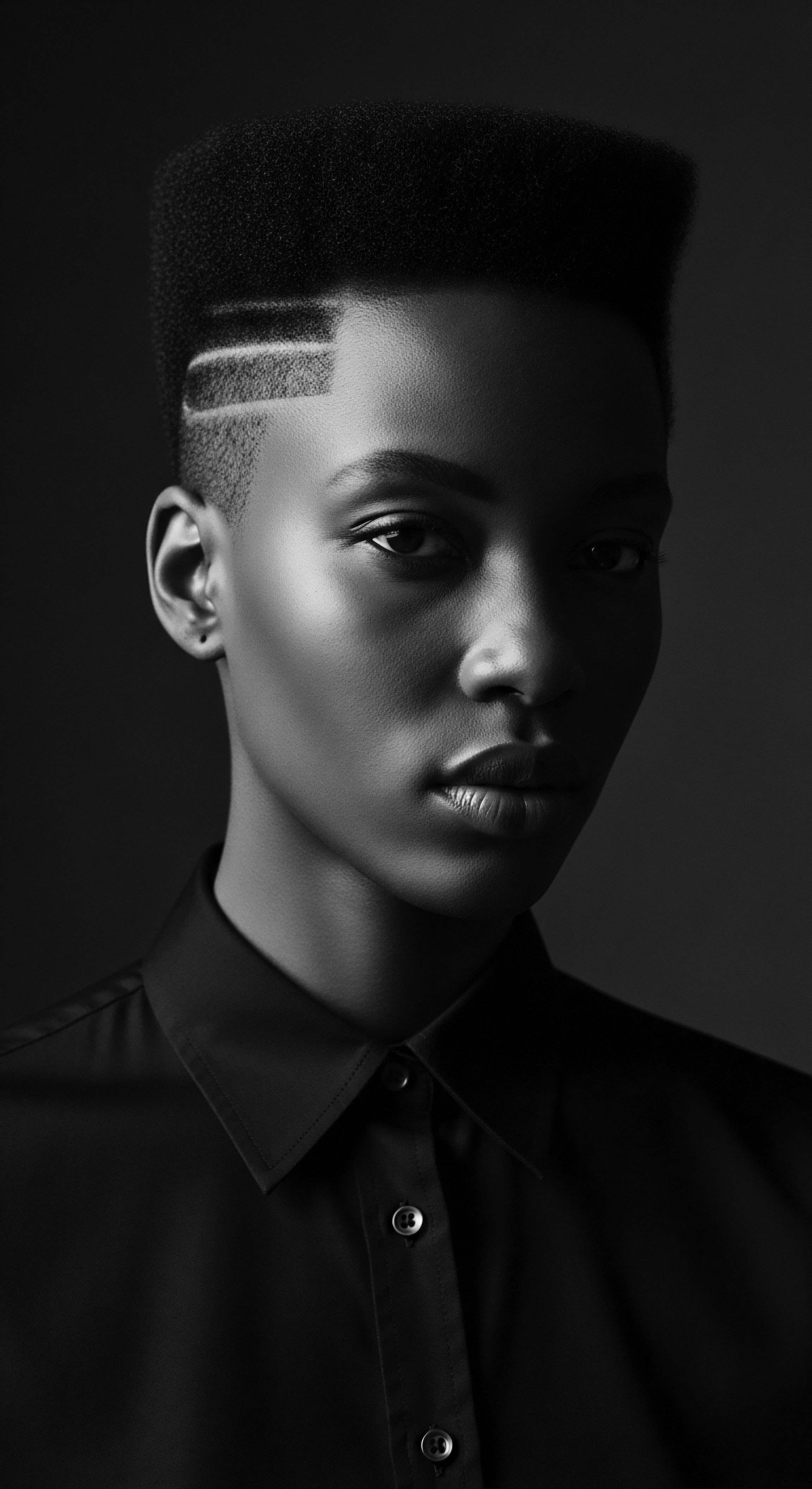
The Architecture of Ancestral Strands
Textured hair, with its unique elliptical follicle shape and varied curl patterns, possesses a distinct anatomical blueprint. This morphology results in a cuticle layer that is often more open at its curves, contributing to its remarkable volume and distinct coil formations. However, this structure also presents a propensity for dryness and fragility if not met with mindful attention. Ancestral wisdom, long before the advent of microscopes, understood these inherent qualities.
Communities devised practices that protected the hair’s delicate structure, methods that minimized breakage and optimized moisture retention, creating a legacy of care attuned to the hair’s biological needs. The sustained use of natural oils and butters, for example, forms a cornerstone of these inherited regimens, recognizing the hair’s thirst for replenishment.
Melanin’s Gradient within the hair shaft determines its color, and as generations mature, the gradual cessation of melanin production leads to the emergence of silver or white strands. For textured hair, this transformation can bring a shift in texture, often rendering the silver segments softer, sometimes finer, or even coarser than their pigmented counterparts. Yet, the ancestral practices that safeguarded the hair’s overall well-being continued.
The methods were adaptable, designed to honor the hair in all its forms and stages. This adaptability speaks to the wisdom embedded in these traditions, ensuring their continued relevance across the lifespan.

A Lexicon of Legacy
The language used to describe textured hair and its care has often been shaped by the prevailing cultural winds, both affirming and dismissive. Yet, within communities, a rich, inherited lexicon existed, describing curl patterns, textures, and traditional styles with an intimate familiarity that bypassed external categorizations. This internal language served as a conduit for knowledge transfer, a means to identify, discuss, and transmit the specific care requirements for diverse hair types within a lineage. It fostered a sense of shared understanding and collective expertise.
The enduring practices for textured hair, including those addressing its silvering, represent a living archive of communal wisdom and profound adaptability.
Consider the intricate terms that denote specific braiding techniques or hair sections, terms often rooted in regional dialects or ancestral languages. These are not merely descriptive; they carry the weight of their historical use and cultural context. The sustenance of textured hair practices through ancestral lines is inextricably linked to the perpetuation of this very lexicon, for language forms the scaffold upon which knowledge is built and passed on. Without the words to describe a technique or the wisdom of an ingredient, the practice itself might falter.
- Shear ❉ The ancestral practice of careful trimming, often with fire or sharpened tools, to promote growth and maintain health, understood as a rhythmic act tied to lunar cycles or specific life stages.
- Oiling ❉ The consistent application of botanical extracts and rendered fats, such as shea butter or coconut oil, to seal moisture and protect the hair shaft from environmental stressors.
- Scalp Massage ❉ A therapeutic ritual performed to stimulate blood circulation, cleanse, and deliver nutrients to the hair follicles, often accompanied by storytelling or rhythmic chanting.
- Protective Styling ❉ Techniques like braiding, twisting, and wrapping that shield the hair from manipulation and external damage, allowing for periods of rest and growth, deeply rooted in cultural expression.

Cycles of Care
The growth cycle of textured hair, influenced by genetic predisposition and environmental factors, was understood through observation and iterative practice. Ancestral communities recognized the rhythms of growth, resting, and shedding, aligning their care practices with these natural cycles. For instance, certain times of the year might have been deemed ideal for intensive conditioning treatments, or specific rites of passage might have involved particular hair preparations.
The sustenance of these practices across ancestral lines also involved adapting to shifting environments and available resources. As communities migrated or faced new realities, the core principles of care for textured hair persisted, even as specific ingredients or tools might have evolved.
For example, the widespread practice of using Plant-Based Rinses was adapted to local flora. In West Africa, the use of Kpakpo Shito (Capsicum frutescens) leaves for scalp health and hair growth, or the renowned “black soap” for cleansing, passed down through generations, highlights an intimate knowledge of local botanicals (Opare-Obuobi, 2018). These specific preparations, often accompanied by songs or oral traditions, illustrate how detailed, regionally adapted care practices were not merely maintained but thrived through consistent transmission.
| Ancestral Practice Systematic hair oiling and buttering with botanicals like shea or argan. |
| Modern Scientific Link Lipid-rich emollients provide a hydrophobic barrier, minimizing protein loss during washing and improving elasticity. |
| Ancestral Practice Protective styles such as intricate cornrows and twists. |
| Modern Scientific Link Reduces mechanical manipulation, friction, and environmental exposure, lowering breakage rates and promoting length retention. |
| Ancestral Practice Regular scalp massages with herbal infusions. |
| Modern Scientific Link Enhances blood flow to the follicles, supporting nutrient delivery and potentially stimulating growth, while also aiding in product absorption. |
| Ancestral Practice Cleansing with natural clays and plant-derived saponins. |
| Modern Scientific Link Gentle cleansing agents remove impurities without stripping natural oils, maintaining the hair's moisture balance and scalp microbiome. |
| Ancestral Practice The enduring efficacy of ancestral care practices is often validated by contemporary scientific understanding, underscoring a profound historical awareness of textured hair needs. |
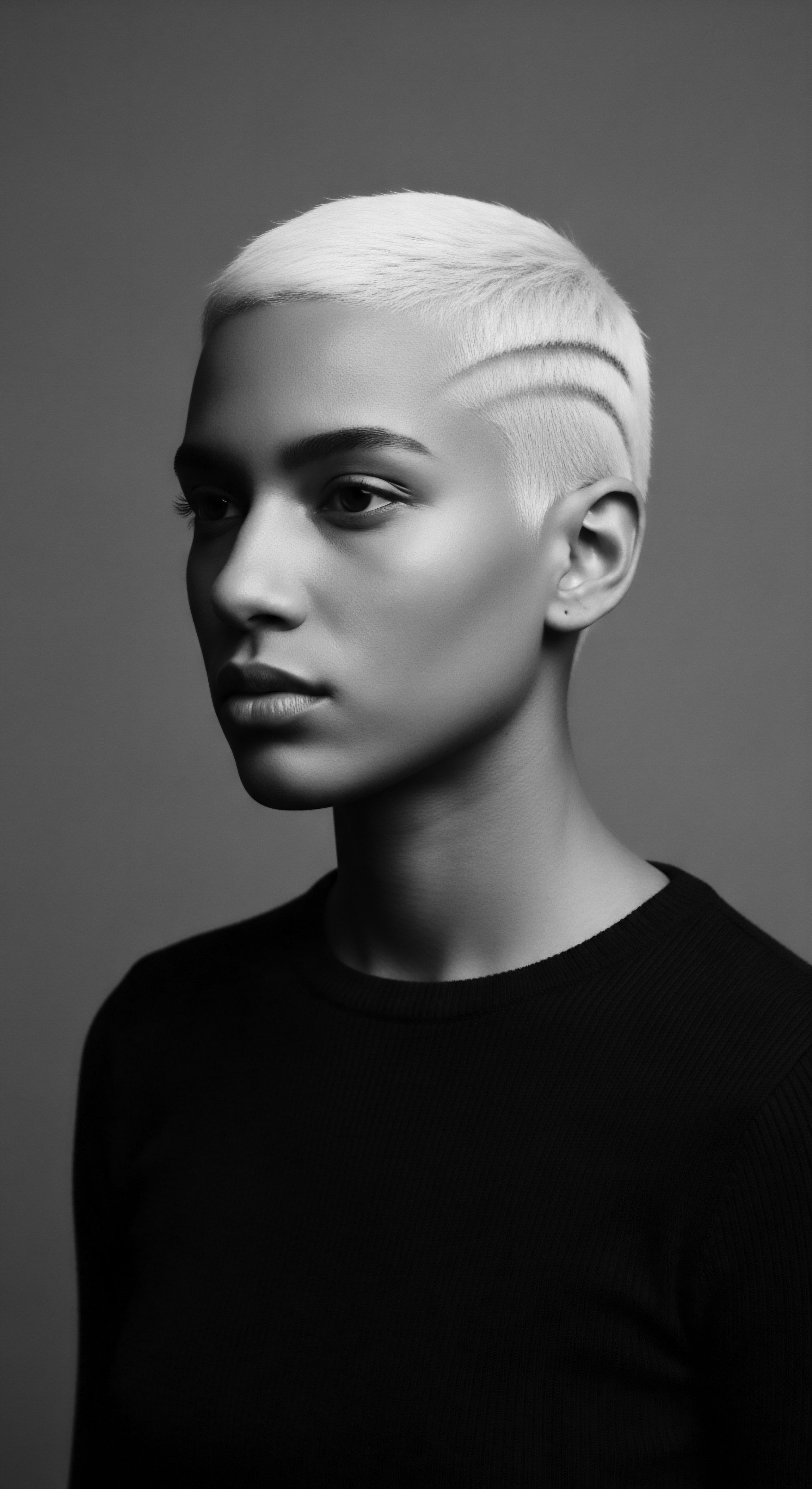
Ritual
The tending of textured hair, particularly as it silvered through the years, was never a solitary or sterile act. It blossomed into a deeply imbued ritual, a ceremonial exchange of knowledge, affection, and identity across ancestral lines. These were not mere steps in a beauty regimen; they were sacred acts, anchoring individuals to their lineage and community. The sustained existence of these practices owes much to their inherent communal nature, transforming the mundane into moments of profound connection and teaching.
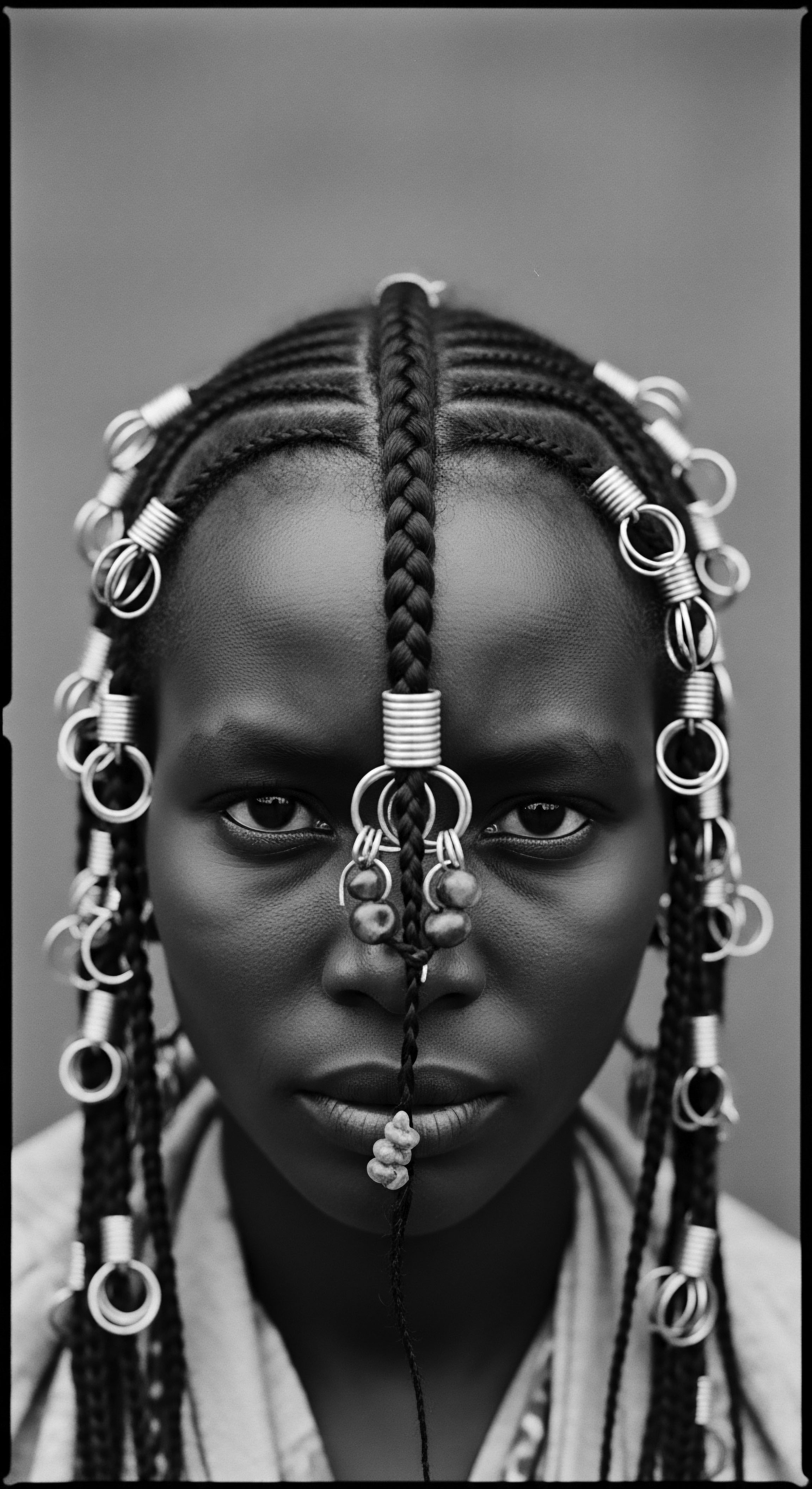
Techniques and Transformative Power
From the intricate cornrows that once adorned Egyptian pharaohs to the majestic dreadlocks cherished by various spiritual traditions, styling textured hair has always embodied a powerful art. These techniques, whether simple finger coiling or elaborate thread wrapping, were passed down with precision and purpose. The hand-to-hand transmission ensured not only the fidelity of the method but also the spirit in which it was performed. For silvering hair, these styles often carried an added layer of reverence, signaling wisdom, experience, and leadership within the community.
Consider the Head-Wrapping Traditions prevalent across Africa and the diaspora. Beyond their aesthetic appeal or protective function, these wraps, often using rich fabrics and vibrant patterns, served as visual markers of status, marital status, or even mourning. The techniques for wrapping, some remarkably complex, were taught by elders to younger generations, a silent language of textile artistry.
The care of the hair beneath, whether young and dark or seasoned and silver, remained paramount, ensuring the foundation for these beautiful adornments was healthy and protected. This continuity in practice, a careful balance of adornment and underlying care, speaks to an unbroken chain of generational wisdom.
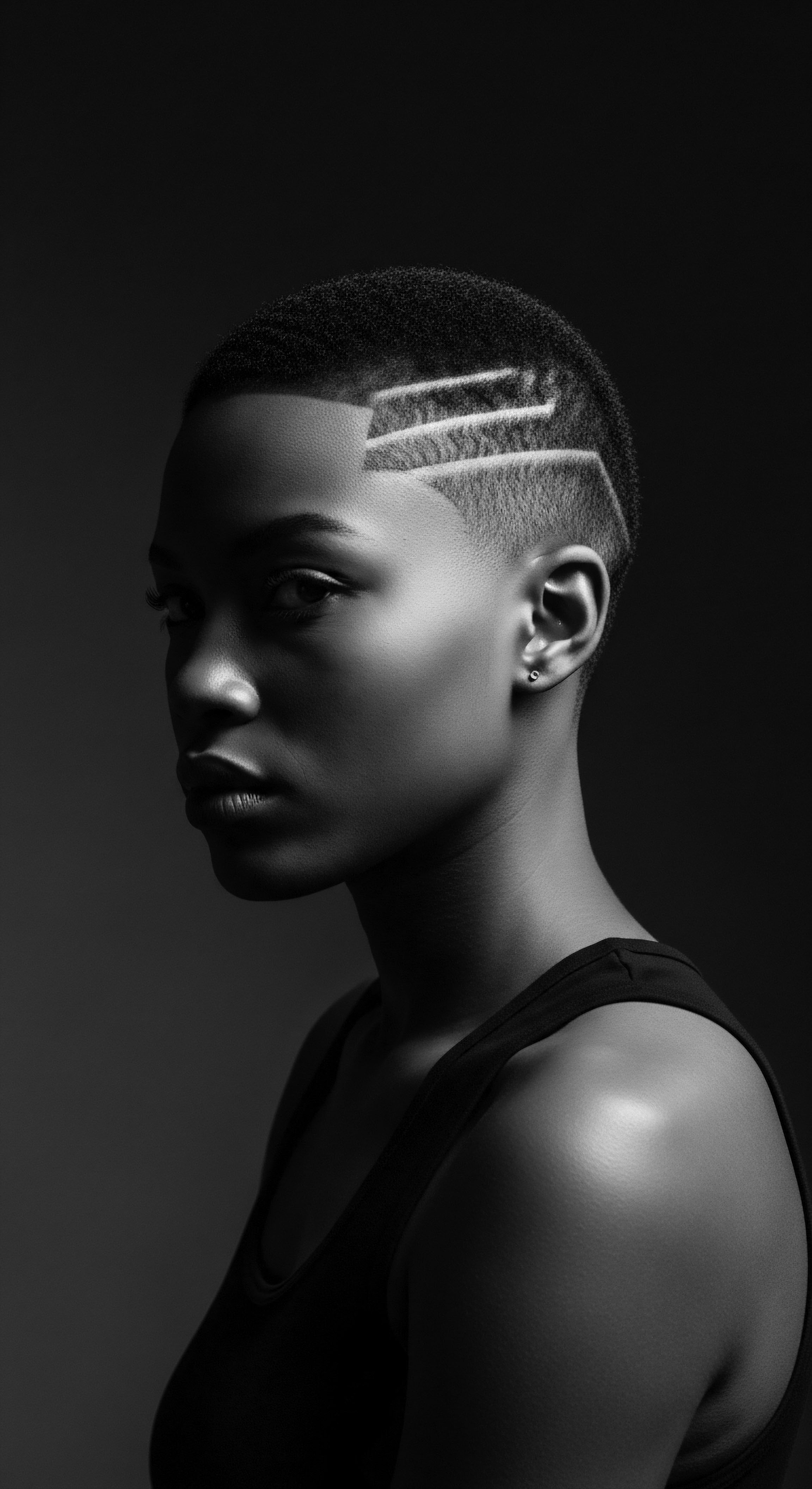
Tools of the Ancestors
The tools employed in ancestral textured hair care were simple, yet perfectly attuned to the needs of the hair. Wide-toothed combs carved from wood or bone, smooth gourds used for mixing elixirs, and finely crafted pins for securing styles were not just utilitarian objects; they were extensions of the hands that wielded them, often imbued with a sense of connection to the earth and its resources. The very act of preparing these tools, or selecting the right branch for a comb, was part of the ritual, instilling a respect for the materials and the craft.
How did these tools, and the knowledge of their proper use, endure through ancestral lines? The answer lies in observation and apprenticeship. Children watched their mothers, grandmothers, and aunties at their toilette, learning by immersion. The tools themselves became artifacts of teaching, their worn handles bearing witness to countless sessions of hair tending.
This direct transmission of practical skill, often in community settings, bypassed formal instruction, making the learning intuitive and deeply integrated into daily life. For silvering textured hair, which might possess a finer or more delicate quality, the gentle nature of these traditional tools proved especially beneficial, preventing unnecessary stress.
The communal act of hair care served as a vital classroom, where skills and stories intertwined to secure the practices for future generations.

Wigs, Extensions, and Historical Context
The use of wigs and hair extensions holds a long and varied history within Black and mixed-race communities, spanning millennia. Far from being a modern invention, these were employed for purposes ranging from ceremonial adornment to practical protection, and even as a means of personal expression. In ancient Egypt, elaborate wigs crafted from human hair, plant fibers, or wool were worn by both men and women across social strata, often intricately styled and perfumed. The care for the natural hair beneath these wigs, as well as the maintenance of the wigs themselves, constituted a specialized knowledge system.
The sustenance of such practices speaks to a deep cultural understanding of hair as a mutable element of identity and presentation. These were not about concealing; they were about enhancing, transforming, or protecting. The knowledge of how to prepare and attach these extensions, how to maintain the health of the underlying hair, and how to style them according to social norms, traveled through family lines and communal networks. This heritage of adaptability and artistry demonstrates a continuity that has allowed textured hair practices to adapt and persist through changing times, including the emergence of silver strands which might influence choice of extensions or wigs.

Relay
The perpetuation of textured hair practices across ancestral lines represents a remarkable relay, a continuous handing off of vital wisdom from one generation to the next. This transmission occurs not through rigid doctrine but through an organic, lived experience, deeply ingrained in daily rhythms and communal spaces. It is here that holistic care, nighttime rituals, and the solutions for hair challenges find their enduring strength, continually informed by a profound reverence for heritage.
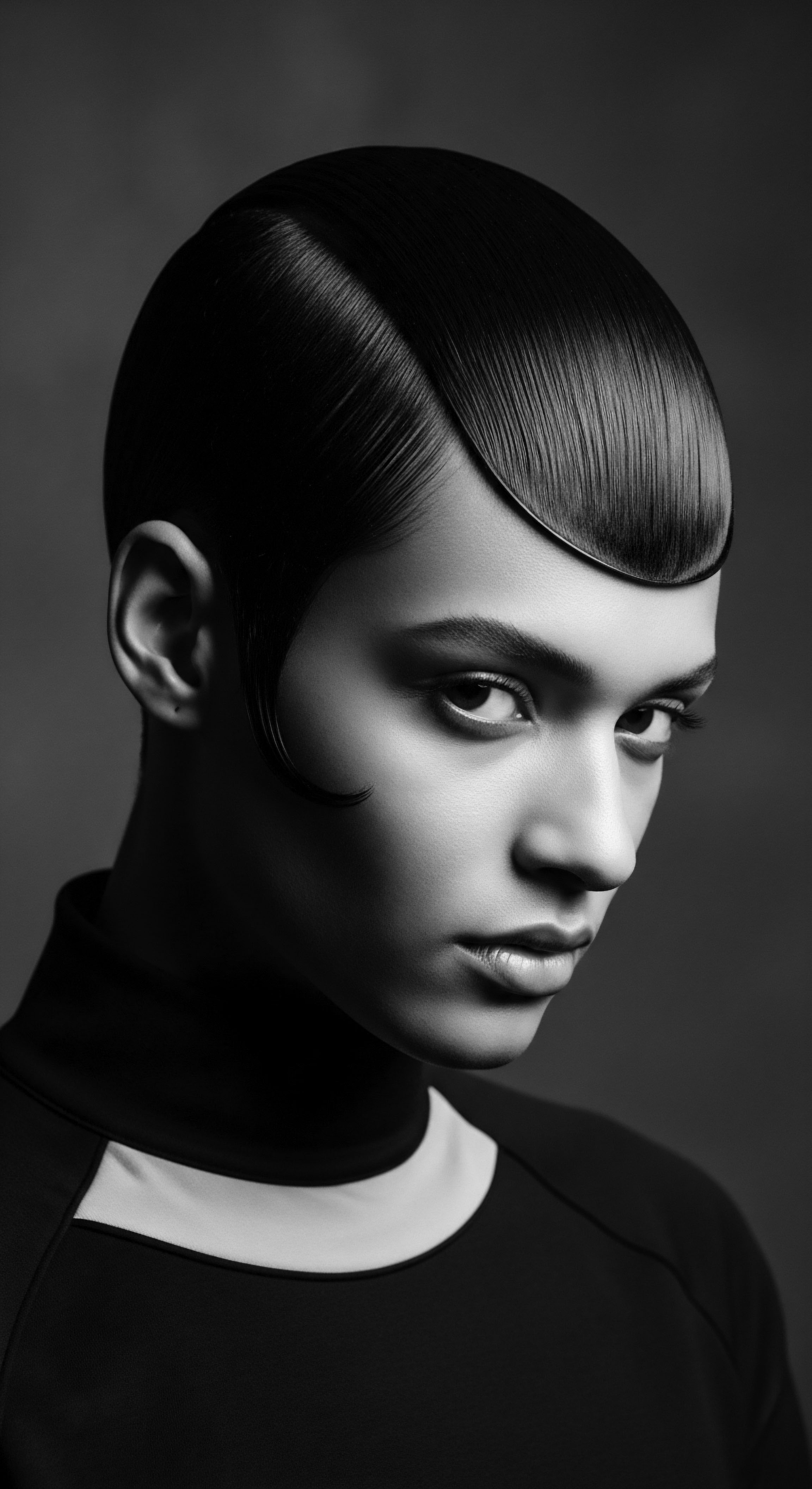
Crafting Personalized Regimens
The concept of a personalized hair regimen, often seen as a modern innovation, finds its roots in ancestral wisdom. Communities understood that each individual’s hair possessed its unique characteristics, influenced by genetics, diet, climate, and lifestyle. Rather than a one-size-fits-all approach, care practices were adapted. Elders and seasoned practitioners observed, advised, and tailored recommendations based on the specific needs of an individual’s hair and scalp.
This involved an intimate knowledge of local botanicals, their properties, and their ideal application. The sustained presence of textured hair care practices rests upon this foundational principle of responsive, individualized attention, recognizing the living nature of hair.
How do traditional methods inform contemporary textured hair regimens? They do so by emphasizing gentle handling, moisture retention, and scalp health, principles that remain universally relevant. The practice of “pre-pooing,” for example—applying oils or conditioners before shampooing—echoes ancient methods of coating hair with protective substances before washing. The historical understanding of the hair’s susceptibility to dryness, particularly for textured hair, led to a preventative approach that minimizes damage from cleansing, a wisdom still guiding modern routines.

Nighttime Sanctuary and Bonnet Wisdom
The ritual of protecting textured hair during sleep is perhaps one of the most steadfast practices inherited through ancestral lines. The invention and consistent use of hair coverings—bonnets, wraps, or scarves—are testaments to a deep understanding of mechanical friction and its detrimental effects on fragile strands. This simple yet effective measure, often overlooked in mainstream hair care, has been passed down as essential for preserving moisture, preventing tangles, and maintaining styled hair overnight.
The nighttime ritual of hair protection embodies a practical ancestral wisdom passed through generations, safeguarding textured hair from wear.
The history of the Hair Bonnet is particularly illustrative. While its contemporary form is often silk or satin-lined, the underlying principle of covering hair for protection is ancient. African women historically used cloths or head wraps for both daytime adornment and nighttime preservation. This practical knowledge was crucial for maintaining the integrity of complex styles that could take hours to create, ensuring their longevity.
The continuation of this practice, even across continents and through periods of immense cultural disruption, underscores its efficacy and inherent value. For silver textured hair, which might be more prone to dryness or frizz, the bonnet becomes an even more critical tool for maintaining its luster and softness.

Ingredient Wisdom through Generations
The knowledge of ingredients—from the nourishing richness of shea butter to the fortifying properties of rosemary or hibiscus—represents a profound body of inherited wisdom. These ancestral communities were pharmacopeias unto themselves, experimenting with and documenting the efficacy of countless natural remedies. This botanical knowledge was not confined to a privileged few; it was a communal asset, shared and refined over centuries.
The sustenance of this knowledge relies on a continuous feedback loop ❉ observation, application, and oral transmission. Recipes for hair masks, scalp treatments, or conditioning rinses were verbally bequeathed, often accompanied by detailed instructions on plant harvesting, preparation, and application specific to certain hair conditions or needs, including those of silvering hair. This hands-on, experiential learning ensured the active life of these traditional practices.
An exemplary account appears in the study of hair practices among the Himba people of Namibia. Their renowned Otjize Paste, a mixture of ochre pigment, butterfat, and aromatic resins, is meticulously applied to their dreadlocks (Malan, 1990). This practice, passed down through matriarchal lines, serves multiple purposes ❉ it protects the hair and scalp from sun and insects, acts as a cleanser, and signals social status and beauty.
The consistent creation and application of Otjize across generations, adapting to the textures and lengths of hair, including the appearance of silver strands in elders, demonstrates a deep, sustained commitment to traditional hair care as an integral part of cultural identity. This is a less commonly cited narrative but powerfully shows how practices are perpetuated, tied to community and identity.
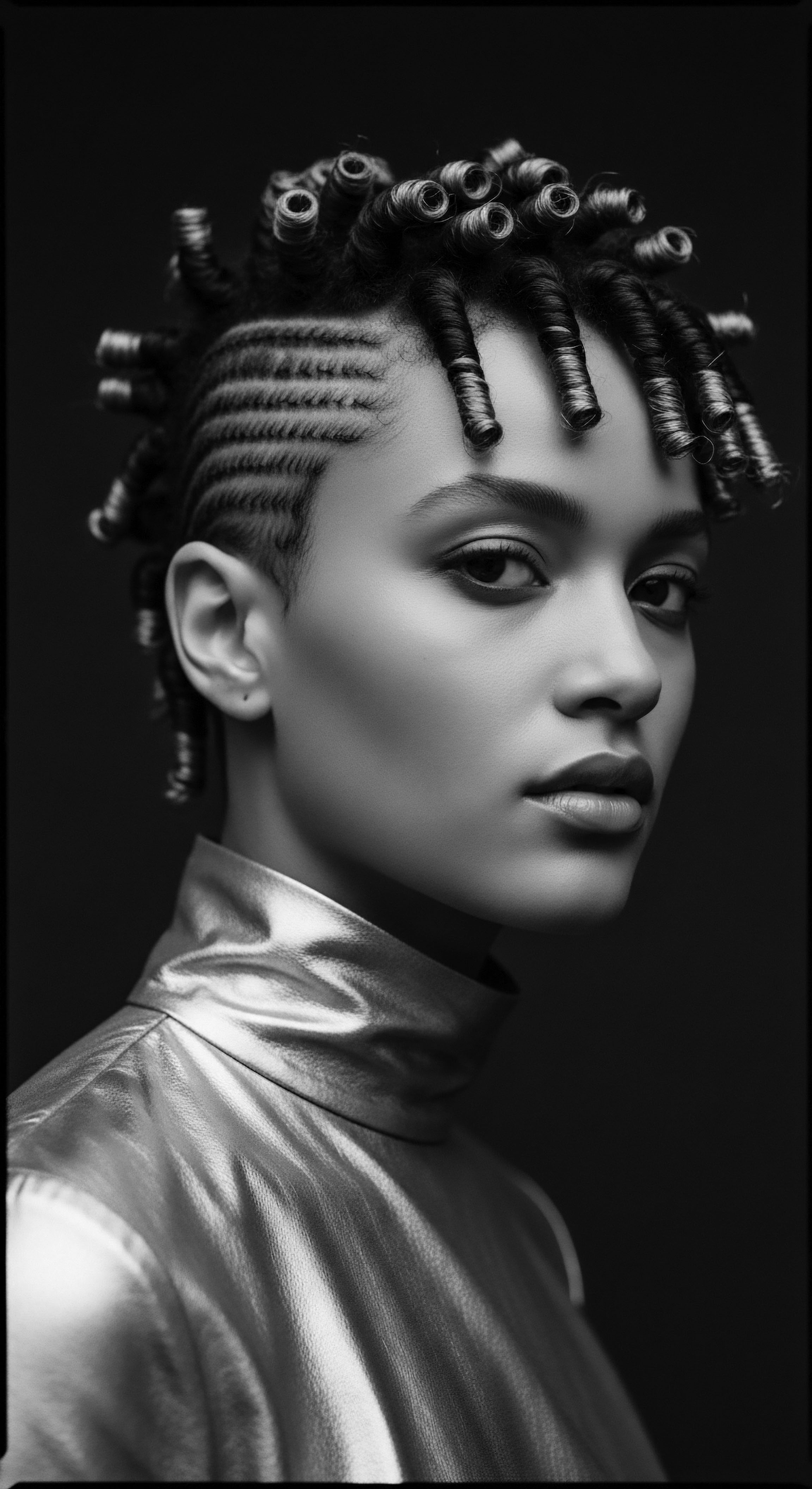
Solving Hair Challenges
Ancestral practices also provided ingenious solutions to common hair challenges. Issues such as breakage, dryness, and scalp irritation were addressed with remedies born from generations of trial and observation. These solutions were often holistic, recognizing the interplay between internal health, external care, and environmental factors. For instance, dietary practices that supported hair health were often intertwined with specific topical applications.
The sustained transmission of these problem-solving approaches means that communities inherited not just methods, but a diagnostic framework rooted in empirical experience. This body of knowledge offers a nuanced perspective on common hair concerns, emphasizing balance and natural restoration.

Reflection
To witness the journey of textured hair practices across ancestral lines is to stand at the confluence of history and future, tradition and innovation. It reveals how the meticulous tending of coils and curls, whether deep obsidian or luminous silver, extends far beyond superficial grooming. This inheritance is a declaration of identity, a celebration of resilience, and a profound connection to generations past. Each carefully chosen ingredient, each deliberate stroke of a comb, each protective twist of a strand, acts as a living prayer, a whispered affirmation of belonging.
The continuance of these practices speaks to a knowing that transcends the ephemeral, a wisdom embedded in the very Soul of a Strand. It reminds us that our hair is not separate from us; it is a vital part of our story, carrying echoes of those who came before. As we stand in the present, discerning the science and cherishing the art of textured hair, we do so with a profound awareness of the long relay of hands and hearts that have brought this heritage to us. The journey continues, always spiraling forward, drawing strength from its deep roots.
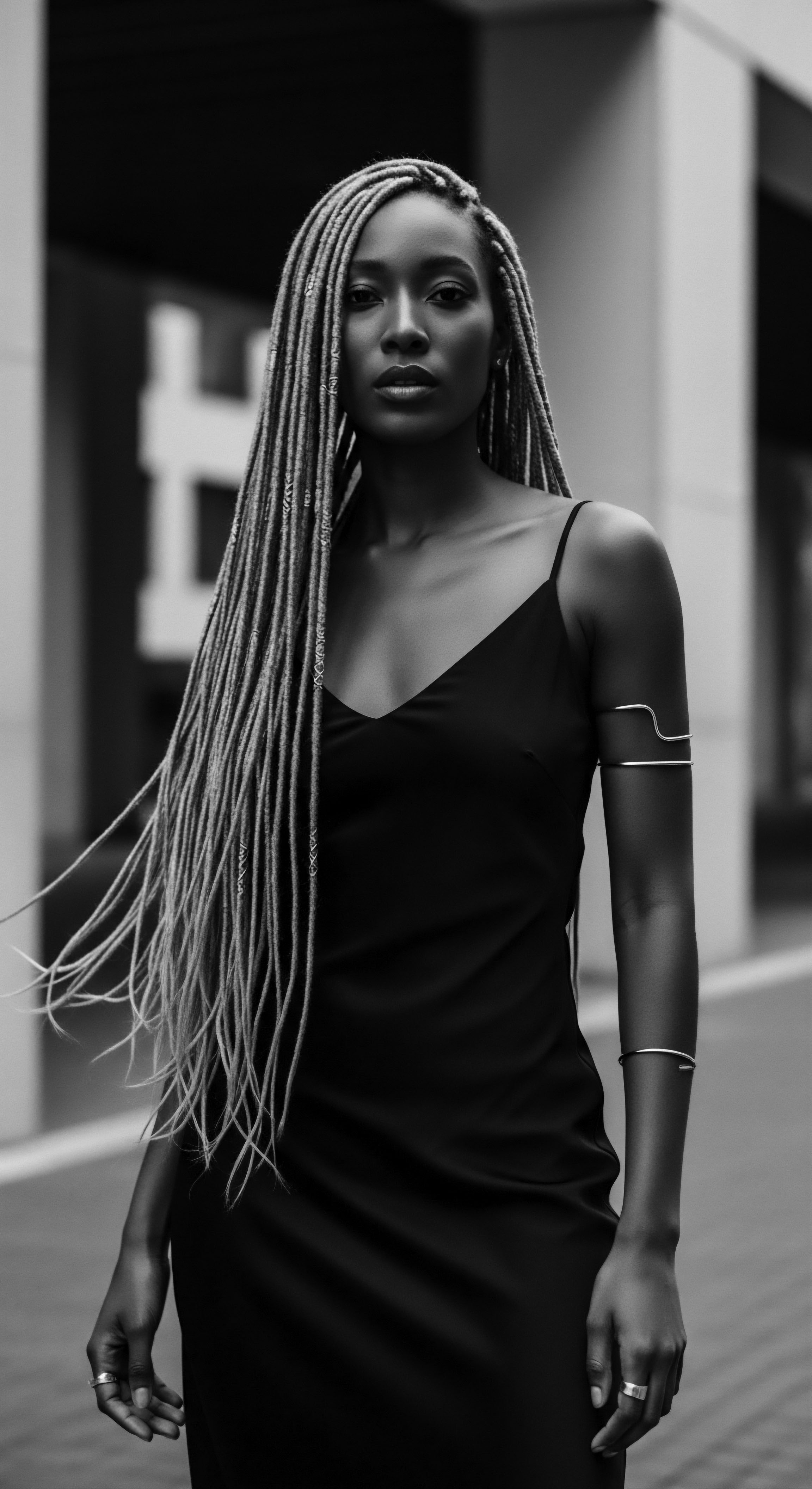
References
- Malan, J. S. (1990). The Himba of Namibia ❉ A study of the changes in their culture and traditional health care. Pretoria ❉ Unisa.
- Opare-Obuobi, K. (2018). Traditional Hair Practices of West Africa ❉ A Cultural and Scientific Overview. Accra ❉ Afia Press.
- hooks, b. (1982). Ain’t I a Woman ❉ Black Women and Feminism. Boston ❉ South End Press.
- Walker, A. (1927). Madam C. J. Walker and Her Times. New York ❉ A. A. Knopf.
- Byrd, A. D. & Tharps, L. D. (2001). Hair Story ❉ Untangling the Roots of Black Hair in America. New York ❉ St. Martin’s Press.
- Mercer, K. (1994). Welcome to the Jungle ❉ New Positions in Black Cultural Studies. New York ❉ Routledge.
- Sweet, H. D. (2007). The Science of Black Hair ❉ A Comprehensive Guide to Textured Hair Care. New Jersey ❉ Createspace.
- White, D. G. (1999). Ar’n’t I a Woman? ❉ Female Slaves in the Plantation South. New York ❉ W. W. Norton & Company.
